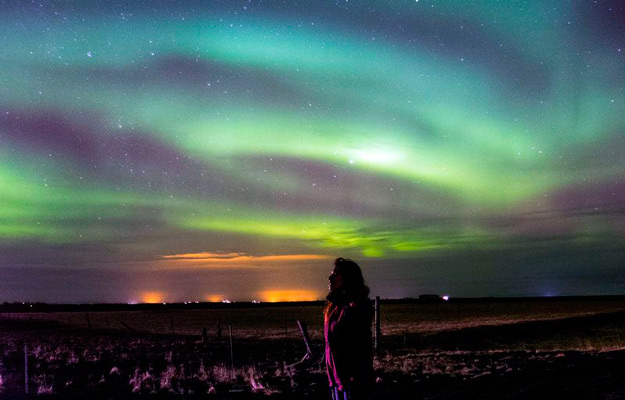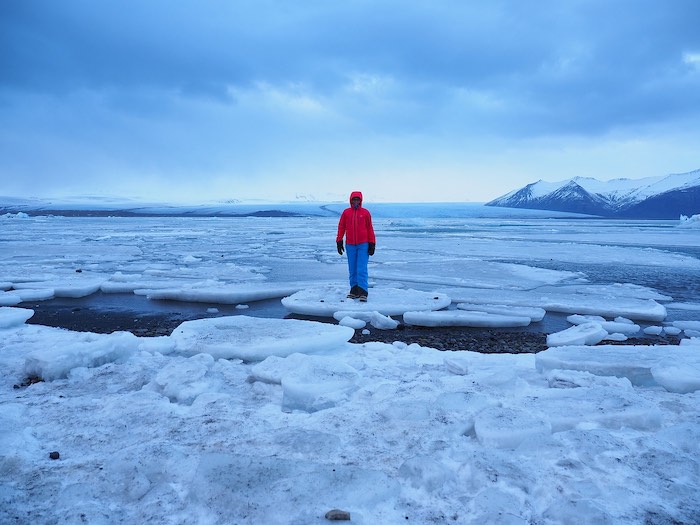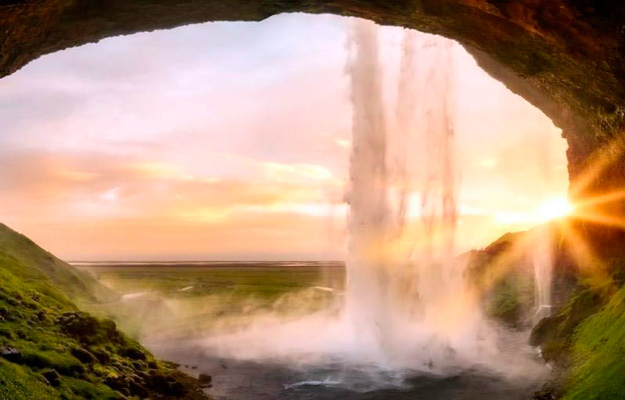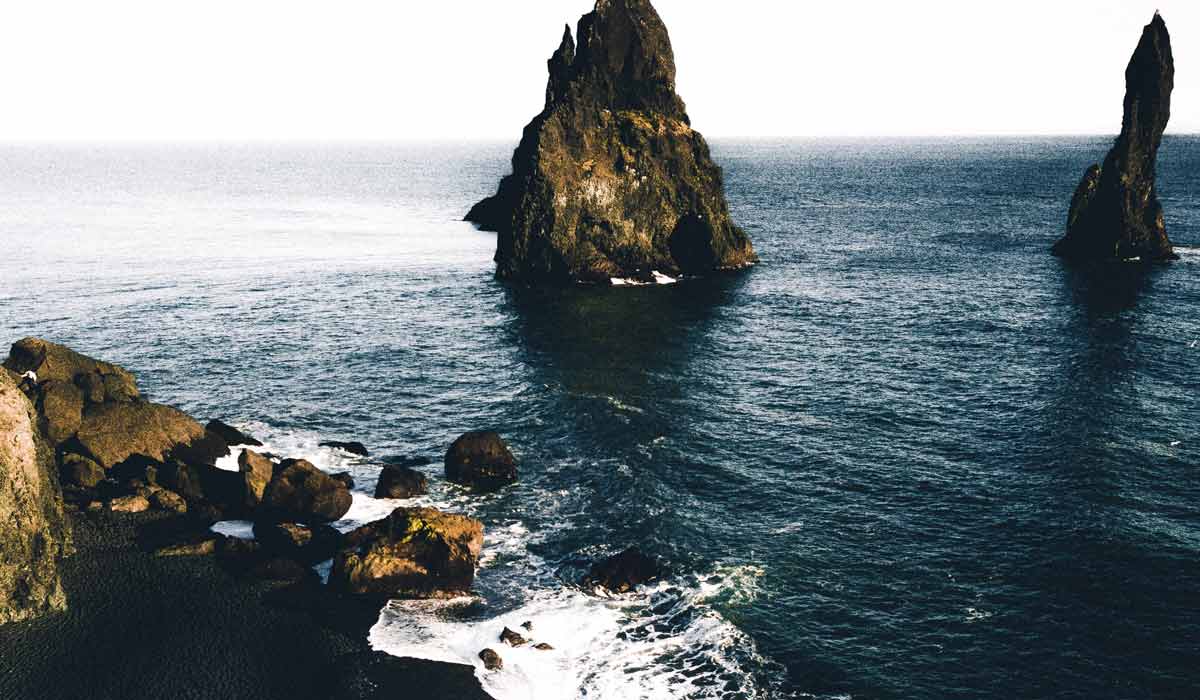This post is also available in:
 Español
Español
Did you know that daylight hours in Iceland can be 20h a day? If you are thinking of traveling to Iceland this post will interest you. And is that this country is known for its great contrasts: glaciers-volcanoes and 24h of light – 24h of darkness.
In Iceland night and day are lived in a very special way, so it will be useful to know the light hours of Iceland by months.
Darkest time
The daylight hours in Iceland during the months of November, December, January and February are scarce. The average sunlight per day is about 4 and 5 hours.
Polar night is a meteorological phenomenon that happens during this time of the year in Iceland and means that the night lasts 24 hours in a row.
So, if you want to see the northern lights, the more hours of darkness the better. We recommend the South Coast to enjoy them in a unique and special way.

November
November arrives and so does winter. In this month begin the days of low light, between 5 and 6 hours.
Despite the fact that at the beginning of November the hours of sunshine in Iceland are around 8 hours a day (sunrise at 9:00 and sunset at 17:00 approximately) at the end of the month there are barely 5 hours of daylight.
December
The daylight hours in the month of December are scarce, we are talking about 4 hours a day (10:45 – 16:00).
Iceland’s winter is dark and cold, but it gets all travelers to discover its dreamy landscapes in a unique way.
For example, visiting the Jökulsárlón Glacier Lagoon or the Blue Ice Cave at this time will make you feel on another planet because you can be surrounded by a beautiful aurora borealis sky.

In addition, it is worth noting that the winter solstice takes place days before Christmas. The December 21 is the darkest day of the year in Iceland. However, at the beginning of the month you can enjoy longer days.
January
January is the coldest month of the year and daylight hours are greatly reduced.
The daylight hours are from 11:30 to 15:45. So the average sunlight hours at the beginning of the month is 5h, but in the last weeks the average increases by 1 more hour daily (6h).
February
During the month of February the daylight hours in Iceland start to increase in a subtle and gradual way. Big changes don’t happen overnight.
At the end of the month the daylight hours reach 9 hours, nothing to do with the beginning of the month (10:00 – 17:15).
Time of daylight
The months with the most daylight hours in Iceland are May, June, July and early August (15 to 22 hours daily).
The midnight sun can be enjoyed at this time of year and means that the sun is almost 24h a day, just the opposite of the polar night.
March
The average daylight hours in March are 11 hours and increasing. This means sunrise at 08:30 and sunset at 18:45 (Reykjavik). The best dates for hiking are approaching.

April
April starts with about 14 hours of daylight and ends with about 15 hours ( 06:45 – 20:30). This situation is much more similar to the rest of the southern European countries.
One of the advantages of these months is that you can take advantage of the daylight hours by hiking such as the Skaftafell hike or the Vatnajökull hike.

May
During the month of May, daylight hours range from 18h (sunrise at 05:00 and sunset at 22:00) to 20h per day. This phenomenon is unique to certain countries in the world.
From this month on, daylight hours increase but not abruptly.
June
In June the summer solstice occurs and with the midnight sun creates a unique atmosphere and time to enjoy the sights of Iceland, they even seem like from another planet!
What happens is that the sun does not really set, being a faint light that caresses the horizon and every landscape, typical of the sunset.
The amount of daylight hours during this month is 20 to 22 hours, so dawn breaks around 03:30 and in the evening at 23:30 approximately.

July
In July it hardly gets dark at all, the average is 20h of sunshine per day (03:00-00:00).
August
In August daylight hours are reduced to 15h (04:30 – 22:30) as in late April. This is because the midnight sun no longer has an effect in this month.
September
September is a month similar to March, with its 12h of light per day from 06:00 to 20:45 and the hours continue to decrease.
October
Finally, at the end of October the average is about 9 hours. However, at the beginning of the month it is 11 hours of daylight, so sunrise is at 7:30 and sunset at 19:00.
Winter is gradually approaching and daylight hours are reduced, being already 5 hours in November.
Table of daylight hours
Below we leave you a table with the time of sunrise and sunset for you to have it in a more visual way. The data are indicative and Reykjavik, being the capital, but it will help you to get an idea.
| Sunrise 🌞 | Sunset 🌚 | Daylights | |
|---|---|---|---|
| January | 11:30 | 15:45 | 3’45 h |
| February | 10:00 | 17:15 | 7’15 h |
| March | 08:30 | 18:45 | 10’45 h |
| April | 06:45 | 20:30 | 8’45 h |
| May | 05:00 | 22:00 | 17 h |
| June | 03:30 | 23:30 | 20 h |
| July | 03:00 | 00:00 | 21 h |
| August | 04:30 | 23:00 | 18’30 h |
| September | 06:00 | 20:45 | 14’45 h |
| October | 07:30 | 19:00 | 11’30 h |
| November | 09:00 | 17:00 | 8 h |
| December | 10:45 | 16:00 | 5’45 h |
In short, in midsummer it is daylight 24 hours a day and in winter the opposite (4 or 5 hours of daylight). During spring (March-April) and autumn (September-October) the daylight hours are more or less the same as in the rest of Europe.
Now that you know the daylight hours in Iceland by months. When do you plan to travel to the country of fire and ice?






